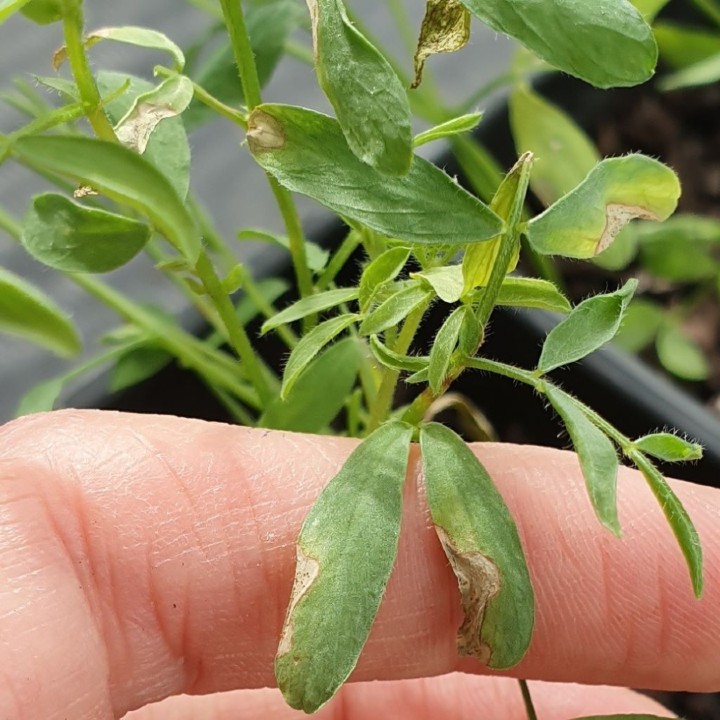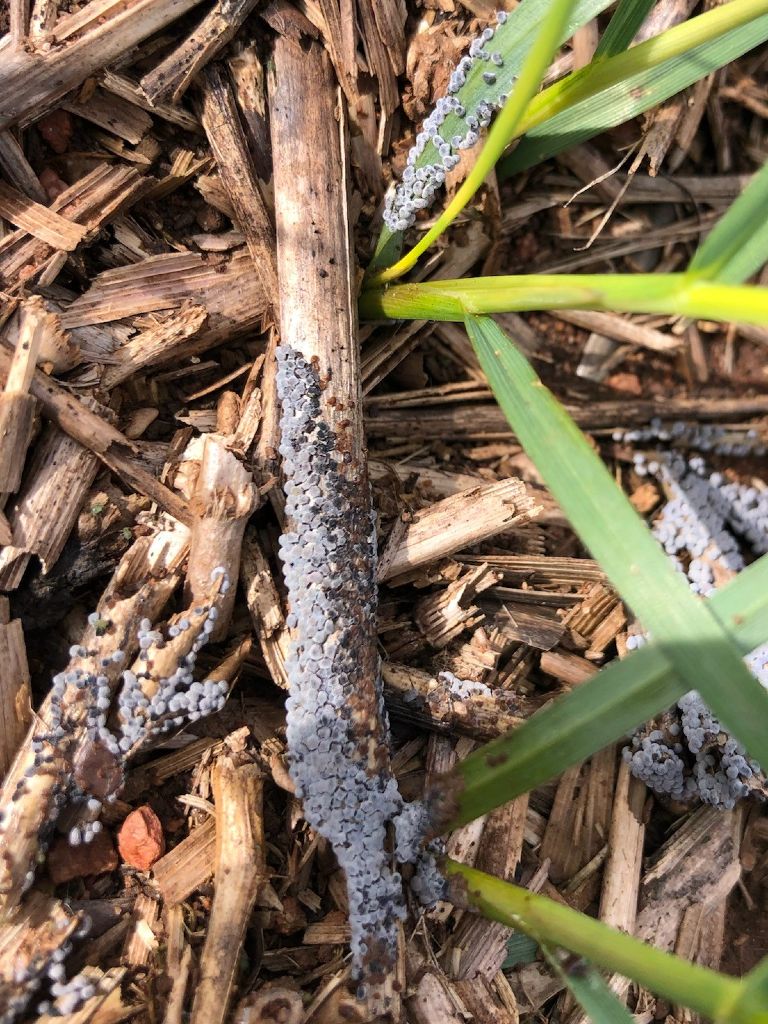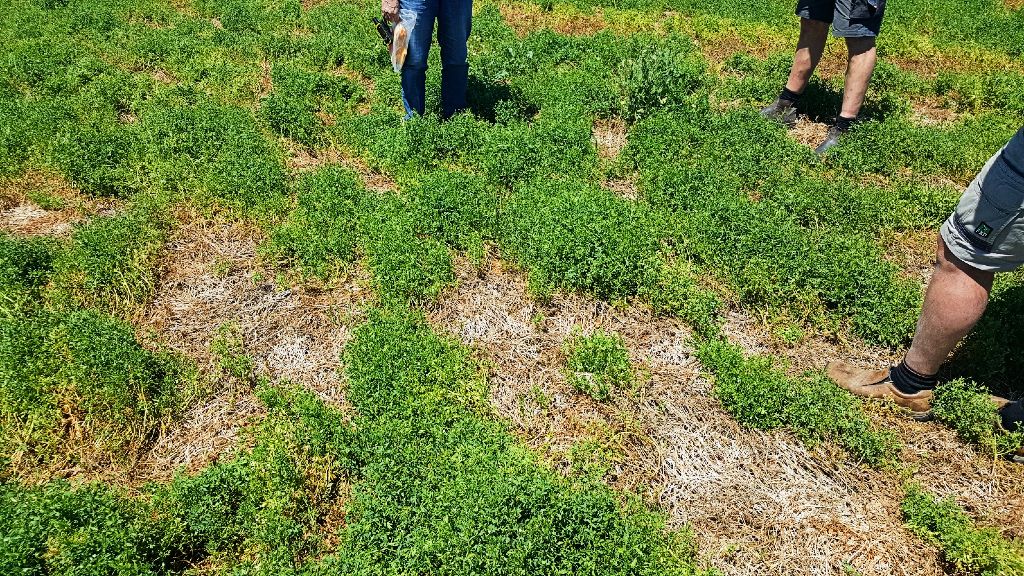Crop Watch July 2022

Monitor your lentils for ascochyta blight
Growers are urged to monitor crops of PBA Hurricane XT, PBA Hallmark XT and PBA Highland XT closely for ascochyta blight (AB) early this season. Isolates that can overcome the resistance in these cultivars are present in the pathogen population and may become selected for over time in farming systems where lentils are cropped intensively and under close rotation.
Annual controlled environment testing of AB isolates collected from commercial crops and field trials in SA in 2021 has revealed that all isolates tested (n=24) were able to infect PBA Hurricane XT and that 79% of the isolates infected at a moderate (MRMS) to high (S) level (Table 1). PBA Hurricane XT’s current rating of MRMS to pathotype 2 may need to be downgraded in the future and growers should manage this cultivar as at a potentially higher risk of AB infection.
Testing also revealed that 45% of the isolates infecting PBA Hurricane XT were able to infect PBA Highland XT at low (MR) to moderately high (MS) level. This is a change from the 2021 testing which found 31% of isolates infected PBA Highland XT at a low (MR to MRMS) level. PBA Highland XT is currently rated MR to both pathotype 1 Nipper-virulent and pathotype 2 Hurricane-virulent isolates and should be closely monitored for AB lesions.
Testing also confirmed that a new reaction group has emerged in the pathogen population. The Ascochyta lentis pathogen population is naturally diverse and genetic recombination between pathotype 1 (Nipper-virulent) and pathotype 2 (Hurricane-virulent) isolates has occurred. These isolates can simultaneously overcome the source of resistance in both Nipper and PBA Hurricane XT. In SA, 58% of isolates collected in 2021 and tested in 2022 have dual virulence. This is an increase from 51% of isolates identified in last year’s testing, and suggests that this new reaction group may be being selected for in the SA lentil cropping landscape.
Table 1. 24 Ascochyta lentis isolates collected in 2021 from SA and Vic were inoculated onto a lentil host differential set in controlled environment conditions in 2022. Entries in the table are the number of isolates per category.
Test reaction | Cumra | Nipper | PBA Hurricane XT | PBA Highland XT | ILL7537 |
|---|---|---|---|---|---|
Resistant | 0 | 7 | 0 | 13 | 24 |
Moderately resistant | 3 | 9 | 5 | 5 | 0 |
Moderately resistant – moderately susceptible | 6 | 7 | 8 | 5 | 0 |
Moderately susceptible | 8 | 1 | 9 | 1 | 0 |
Susceptible | 7 | 0 | 2 | 0 | 0 |
Total | 24 | 24 | 24 | 24 | 24 |
Shading represents 20% or more of isolates tested causing that reaction type on the cultivar/line.
Management advice
AB is driven by rainfall, and disease will spread and become more severe with each rain event.
If in-crop seedlings are showing moderate to high levels of disease, you may need to apply a mid-season fungicide spray, timed ahead of rain events.
Note that AB disease will not spread during dry periods and fungicides can be held off while there is no rain.
If disease is present and rainfall is imminent, you may need to apply a fungicide at podding to protect the developing grain.
It is recommended that crops of PBA Hallmark XT, PBA Hurricane XT and PBA Highland XT are closely monitored for any signs of disease during the season.

Ascochyta blight on lentil plant in controlled environment testing.
Slime moulds on cereal stubble
Have you seen some odd growths on cereal stubble or on your emerging crops this winter? SARDI cereal pathology team have received multiple samples of slime moulds growing from cereal stubbles submitted for diagnostics. The wet conditions this winter have been conducive for these odd fungus-like organisms to crop up in paddocks.
Slime moulds are not technically fungi and are classified as protists with amoeboid and flagellate growth stages. The growths that have been observed are grey and resemble clusters of insect eggs but are likely to produce spores and will often be powdery to the touch.
These slime moulds are not pathogenic and are unlikely to cause damage to crops. The fruiting clusters usually last for a week or less and should resolve on their own.
You don’t need to be concerned if you find these in your paddocks.
If you are unsure of diagnosis, contact the SARDI cereal pathology team.

Slime mould cluster growing on cereal stubble and emerging cereal crop.
Webinar: What’s that symptom? Know your cereal and pulse diseases

You’re invited to attend a free webinar on how to diagnose and predict cereal and pulse foliar diseases to assist with timely disease management decisions.
Hosted by SARDI cereal and pulse pathologists, the webinar will also summarise the results of the GRDC-funded 2021 SA cereal and pulse foliar disease surveillance project.
The webinar will be on held on 2 August at 10 am.
The webinar, which is part of a national disease surveillance program funded by GRDC, will provide growers with insights into what foliar disease issues they should look out for in 2022.
You will learn:
- how to predict disease outbreaks in cereal and pulse crops using knowledge of disease life cycles
- relevant and timely information about seasonal disease risks to support disease management strategies.
You will have the opportunity to ask questions.
Register now
Attendance to this event is free.
Register online by Friday 29 July 2022.
Send us your pulse, canola and cereal crop disease samples
SARDI is seeking diseased samples from this year’s commercial pulse, canola, barley and oat crops. The samples will assist research scientists Sara Blake and Tara Garrard with monitoring the nature and extent of disease in 2022.
Grain growers and advisers are being asked to help in providing samples of:
- ascochyta blight in lentil, faba bean and chickpea
- sclerotinia in pulse and canola crops
- net form net blotch and scald in barley
- septoria in oats.
These samples will contribute to GRDC project investments that screen for any changes in ascochyta blight disease resistance of current cultivars, to monitor pathogen population changes and to also understand how serious a disease sclerotinia is for the southern pulse industry.
The barley disease samples will contribute to a national GRDC survey pathotyping key barley foliar pathogens to monitor pathogen population changes and to screen for any disease resistance changes.
Oat septoria samples will contribute to a GRDC project identifying novel sources of oat Septoria resistance and understanding the virulence of the pathogen.
For ascochyta and sclerotinia in pulses and canola, collection kits with return envelopes will be provided to growers and advisers willing to provide samples, please contact:
Sara Blake
Phone: (08) 8429 2248
Email: sara.blake@sa.gov.au
For net form net blotch and scald in barley, and septoria in oats, please contact:
Tara Garrard
Phone: (08) 8429 2247
Email: tara.garrard@sa.gov.au

Stay up to date with the latest disease-related issues and solutions for broadacre crops during the growing season.

